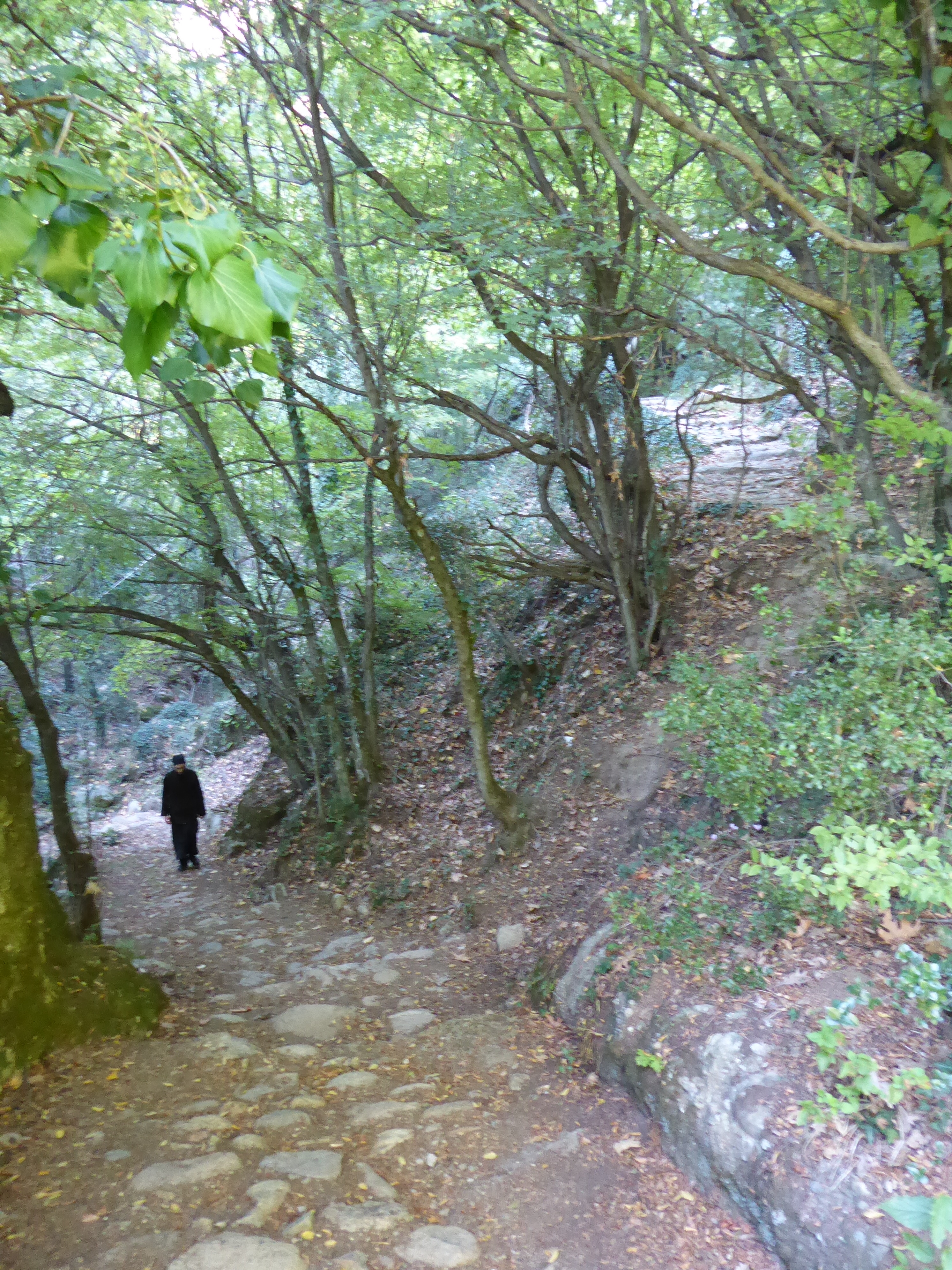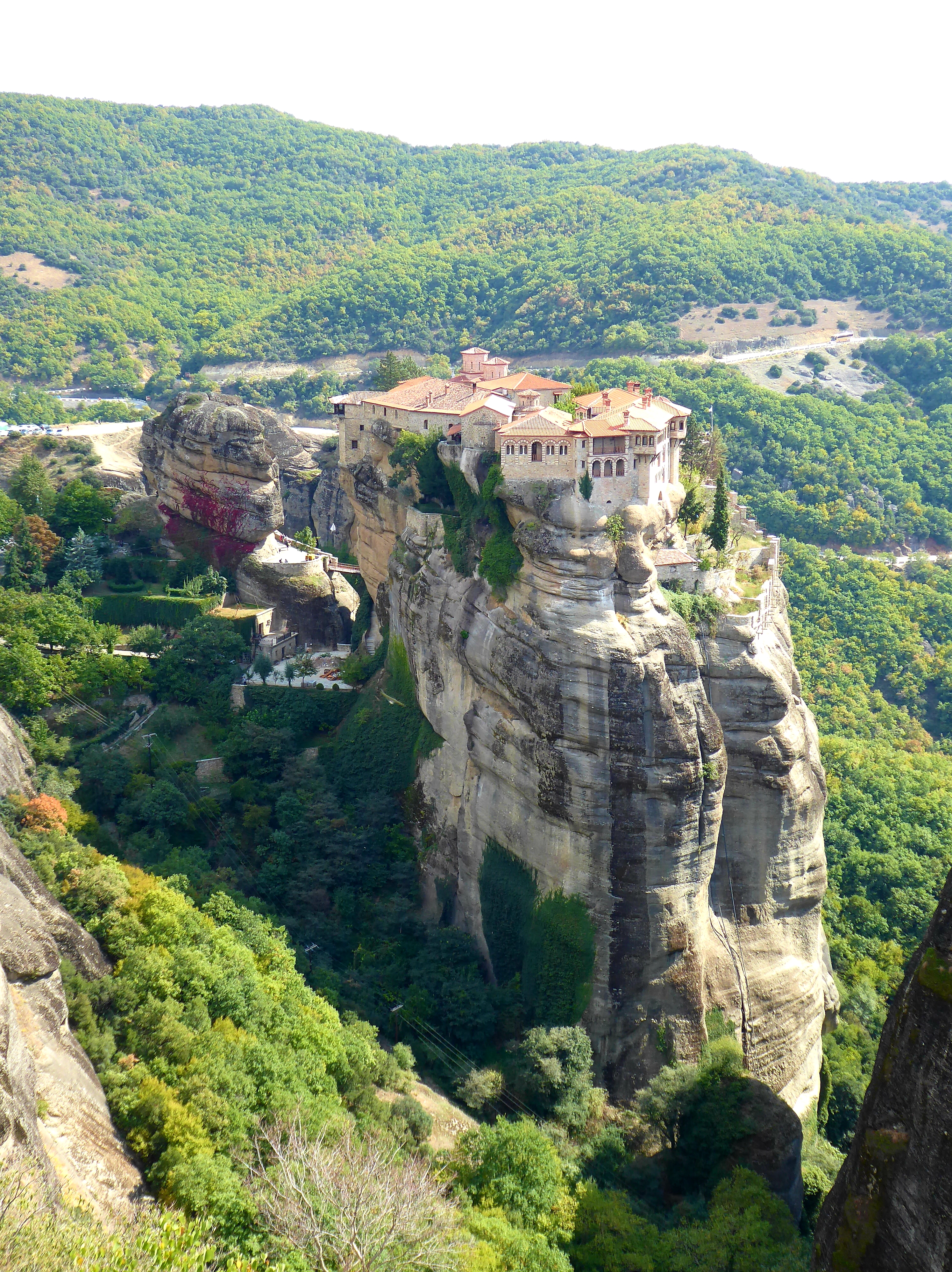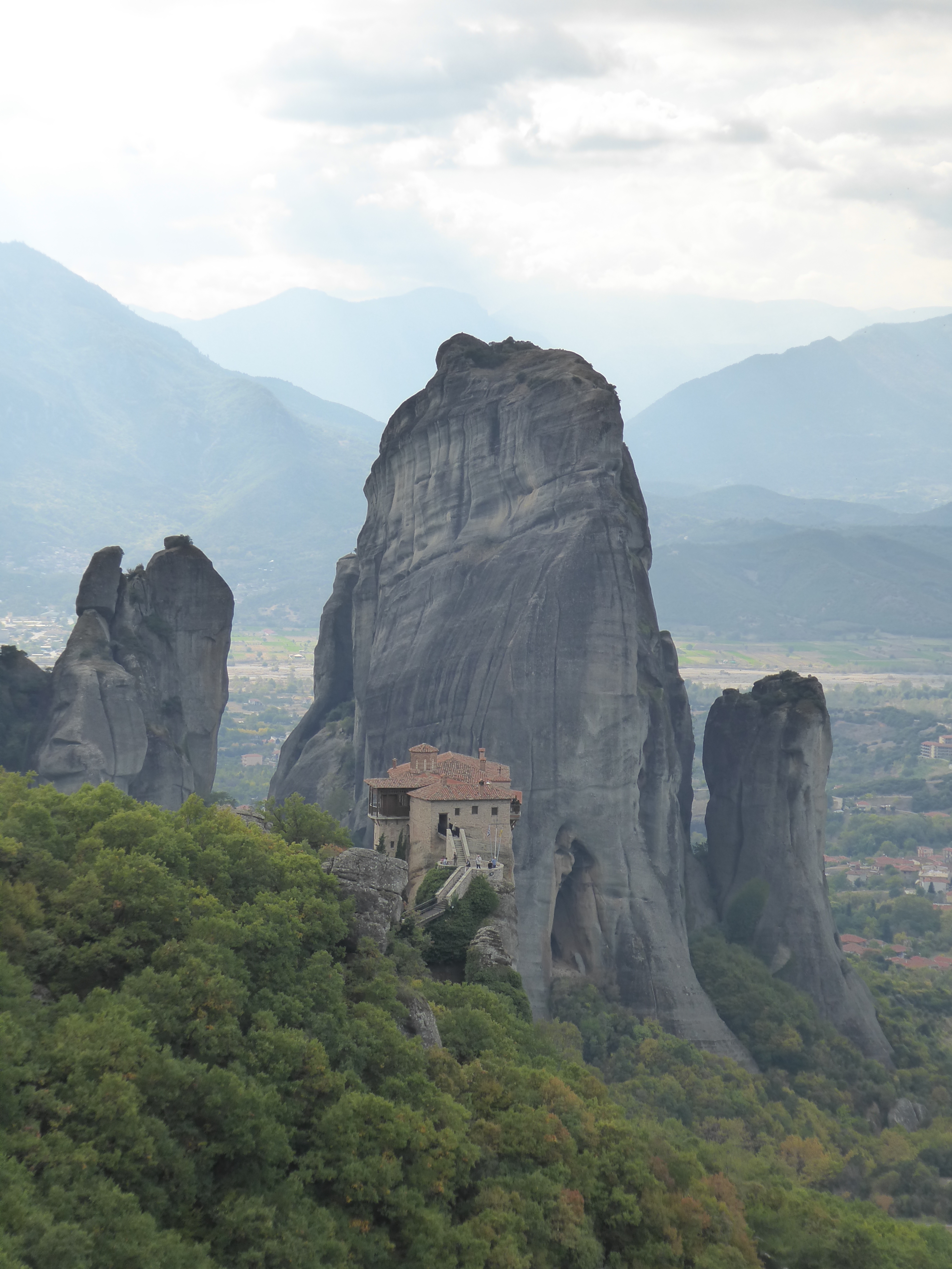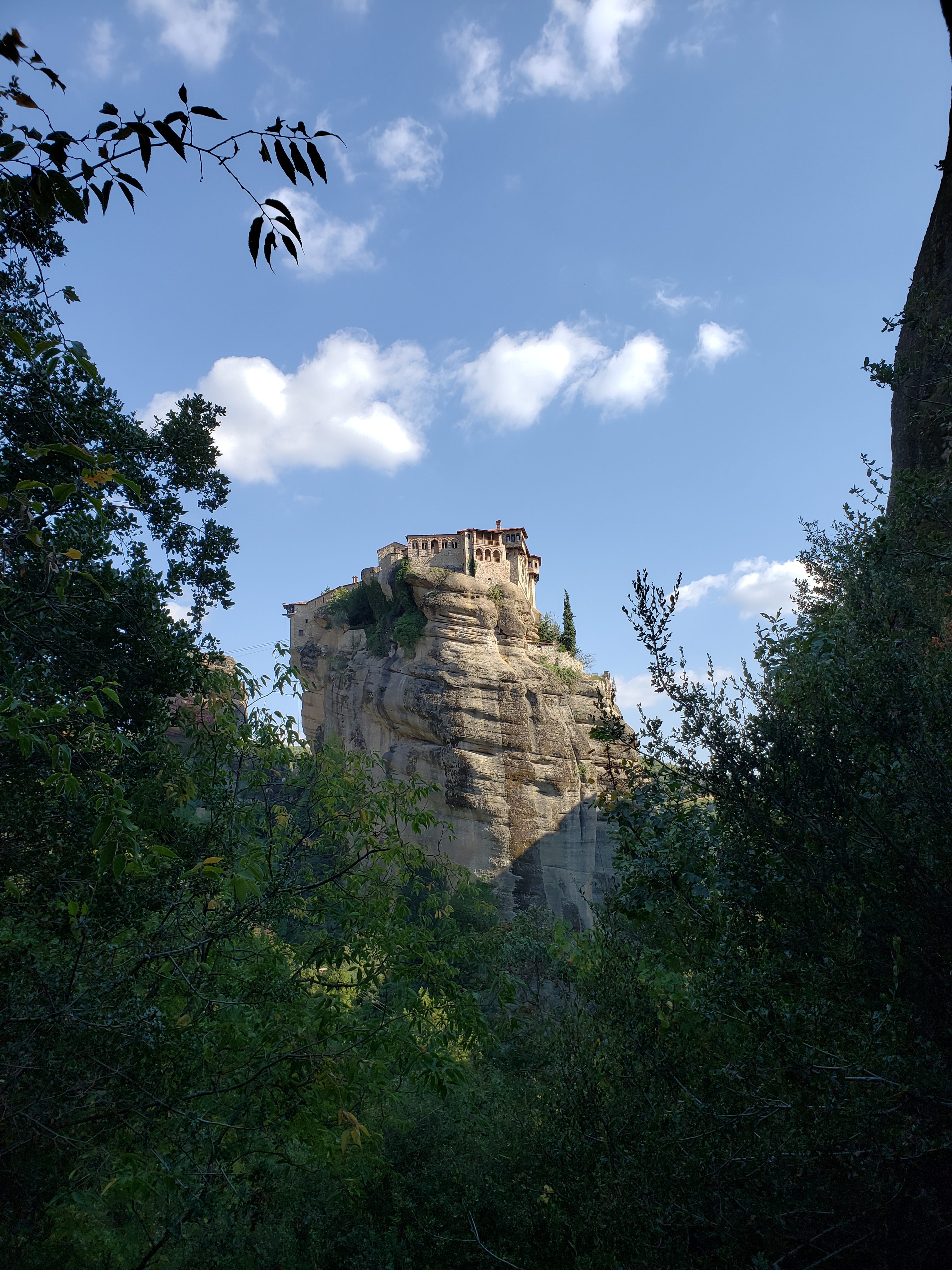
9 October to 14 October
Anticipating crowds at “the most visited place in Greece” I booked my five nights accommodation in advance. My choice was based on excellent reviews, but I hadn’t paid much attention to the location.
Driving through the modern, but appealing town of Kalambaka (the original structures had been burned down by the Nazis) I was pleased that my GPS was directing me to the small adjoining village of Kastraki. I left the hustle and bustle to find steep and narrow roads and other-worldly pillars of rock looming over my guesthouse. Kastraki remains remarkably unspoiled by tourism with its modest homes, bakery, grocery, residents who only speak Greek, and few shops although the tavernas cater largely to tourists.
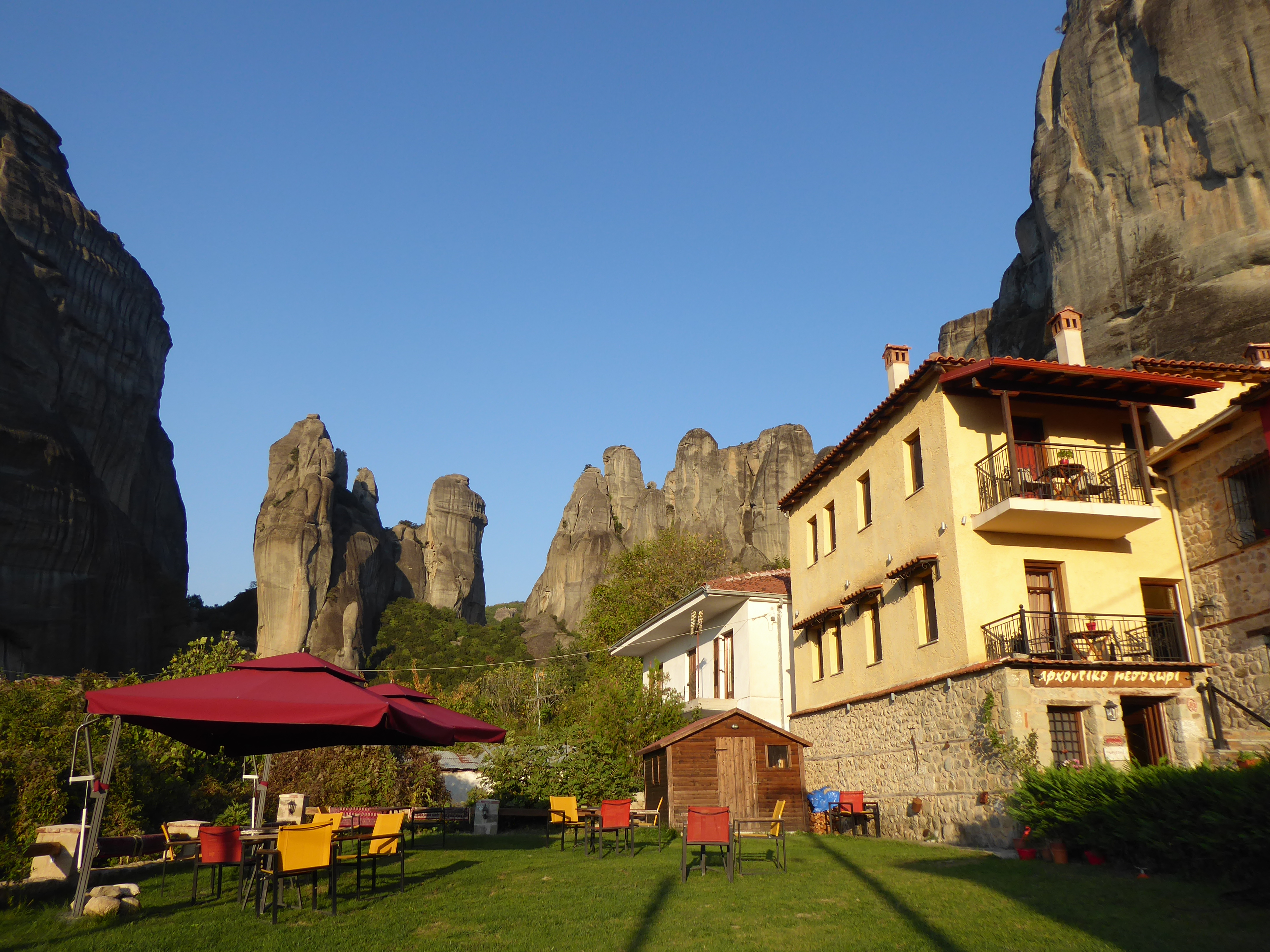
My decision to stay five days is not typical. Most people arrive on day-trips from Athens, or remain a night or two to see a few monasteries. My plan was to hike in the area and take my time visiting the six monasteries still in use(four are for monks and two for nuns), albeit very few monks or nuns still live there. There are also about twenty abandoned monasteries with varying degrees of accessibility.
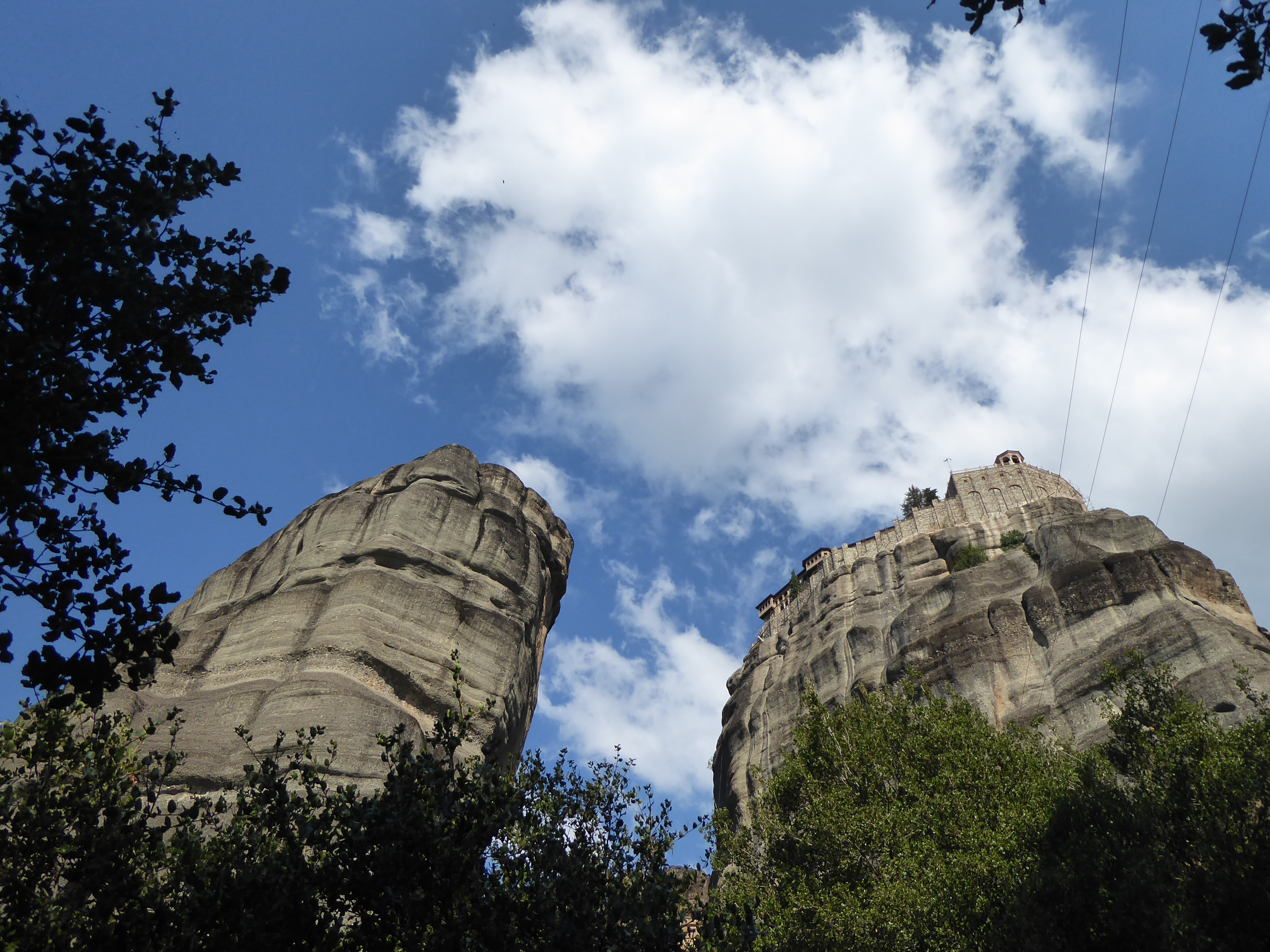
Meteora’s unusual landscape, offering isolation and protection, attracted dwellers since ancient times. (Meteora means “suspended in the air”) By the 11thc. hermits came to the area and by the 14thc. the first monastery was built. Back then the difficult access was intentional. Monks had to climb sheer rock or use temporary wooden and rope ladders. Provisions and less fit monks, until recently, were hoisted up with large nets. The nets are still used for supplies, but the monks, like the tourists, can now arrive by stairs. Admiring the ample girths of today’s monks I could not imagine them attempting their predecessors’ feats.

However, the area today has understandably become a popular destination for rock climbers.
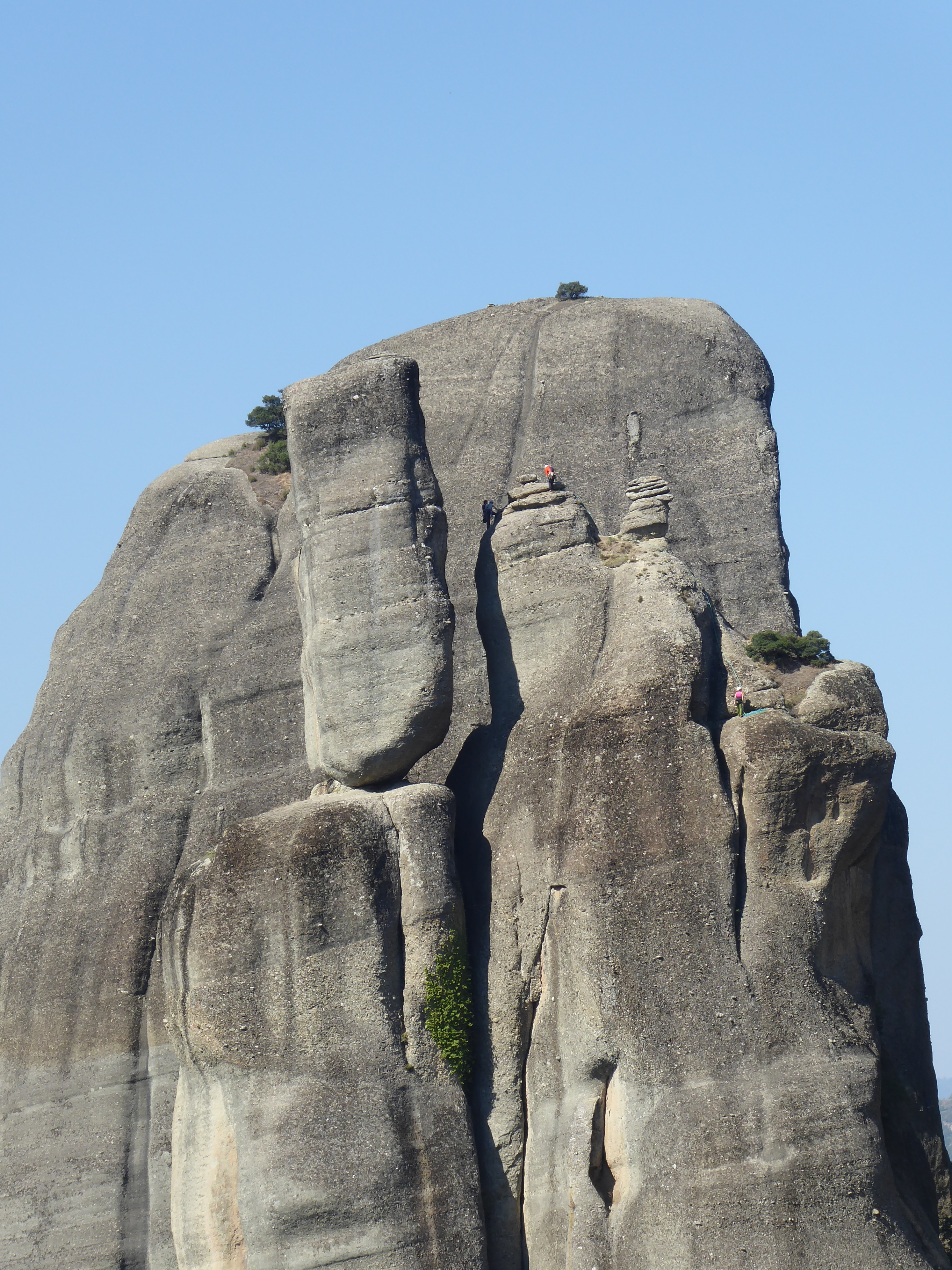
Getting information on hiking to the monasteries seemed purposely difficult. The “Information Center” seemed intent on selling tours far more than offering guidance. And hiking on my own was discouraged. ” Paths are poorly marked.” But doing some research on the mighty web I found a young, inexperienced, woman hiker’s account reassuring. “You can’t get lost.”
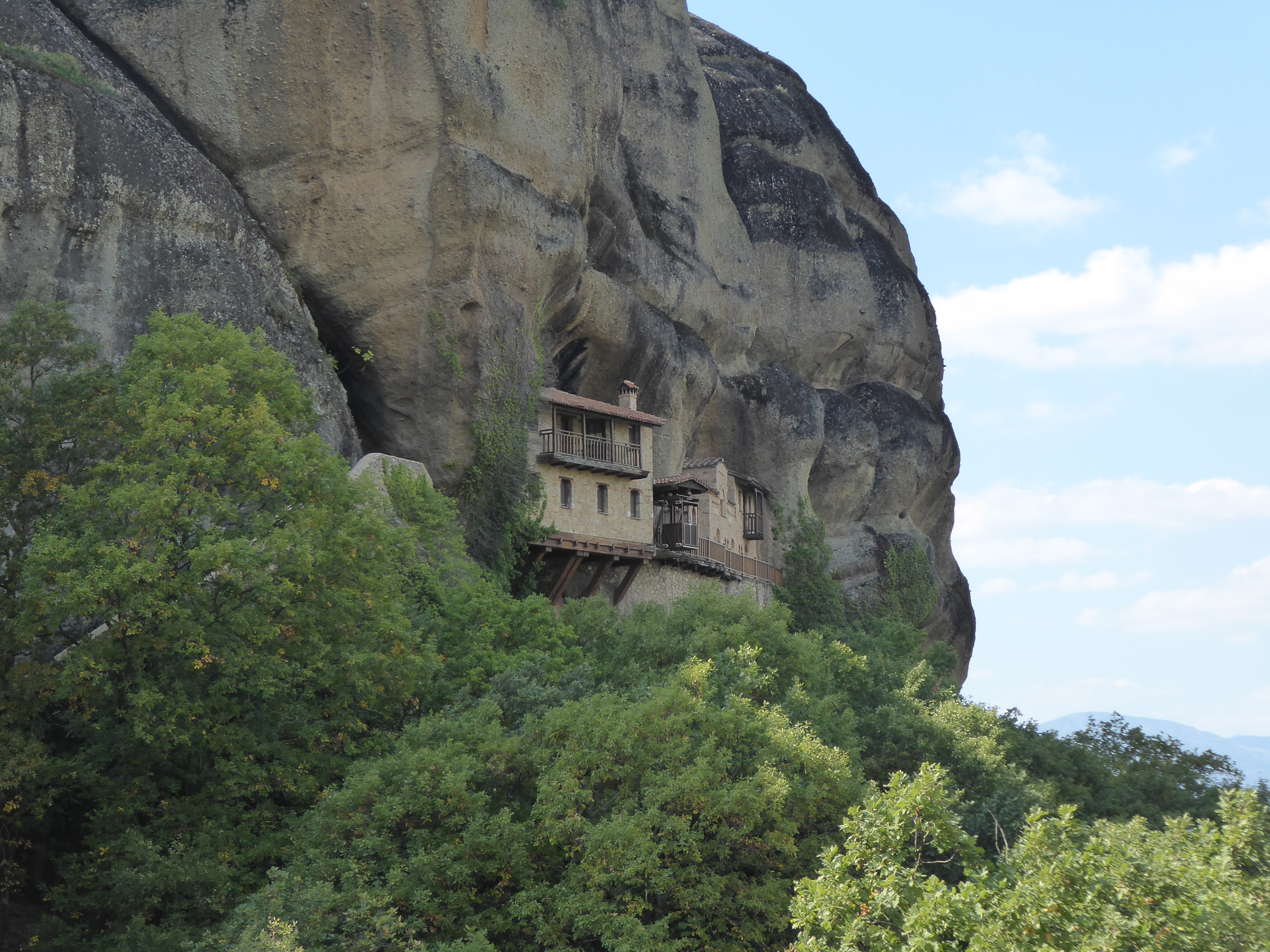
And so with a sketchy map and the kind guidance of a shop owner who pointed me in the right direction, I set off from the town square to the St. Nikolaos monastery not far from my guesthouse.
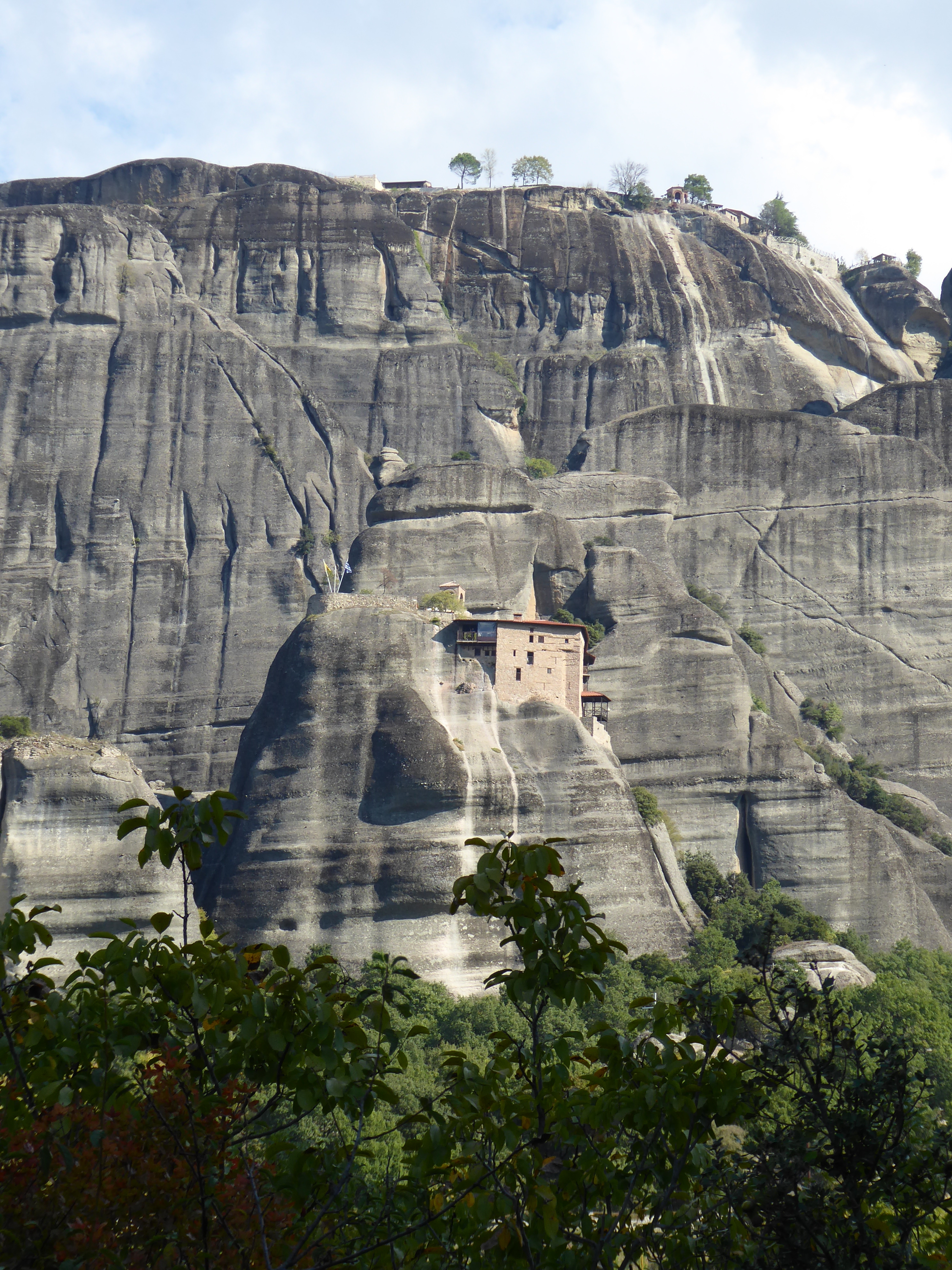
The village road turned into a dirt road. I then arrived at a crossroads that cars and tour buses use. I crossed it and just beyond noticed a stone path. I was surprised, after being told the paths were poorly marked. But it seemed to be going in the right direction, so I took it up and up. It was wonderful. I knew I couldn’t get lost, except in my thoughts.
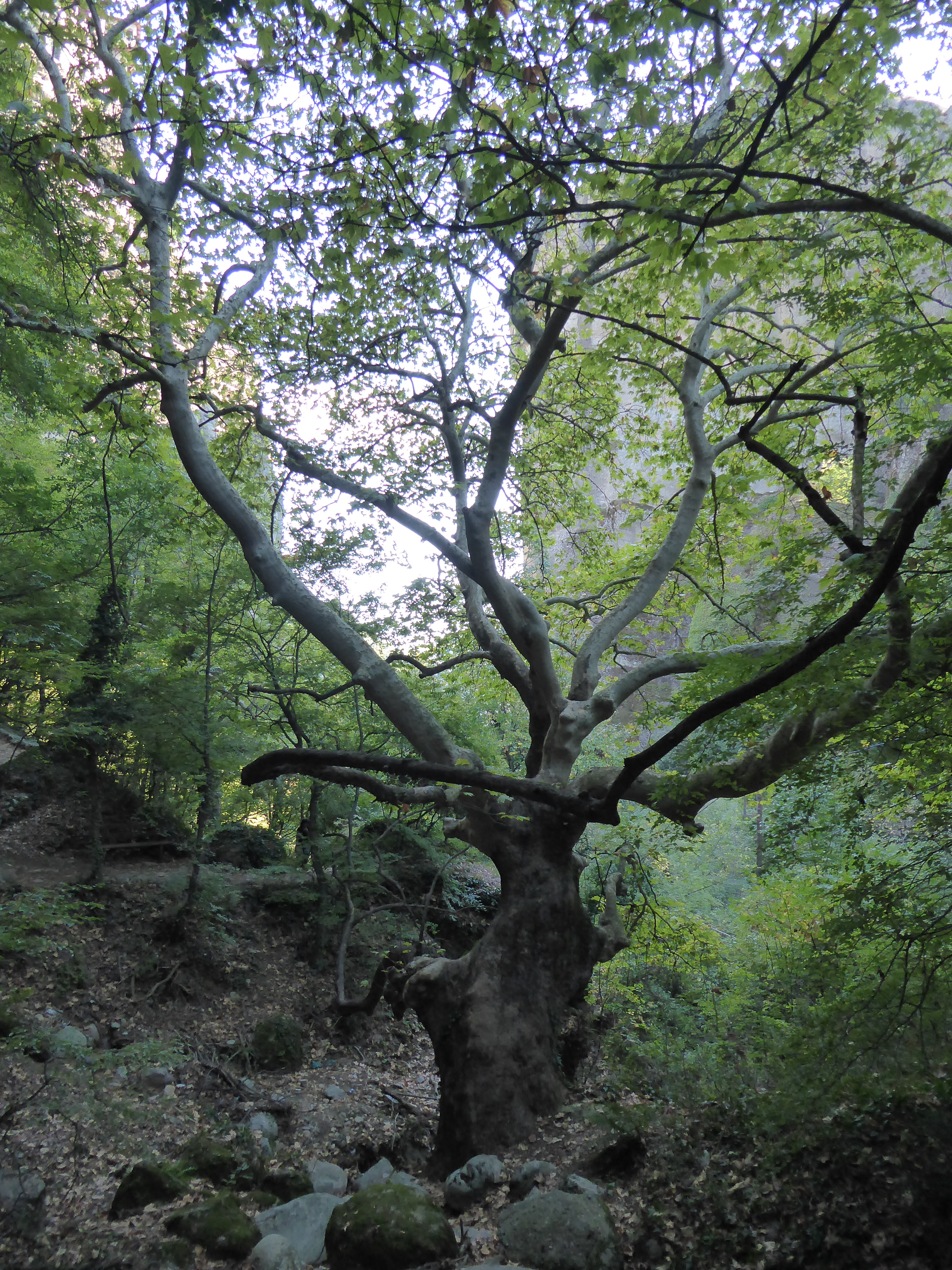
I made my way through this peaceful forest enjoying my surroundings. I didn’t see or hear anyone else, only the birds singing. As I hiked I thought of all the effort it must have taken to create such a long path made of stone–then I thought of all the effort needed to build the monasteries.
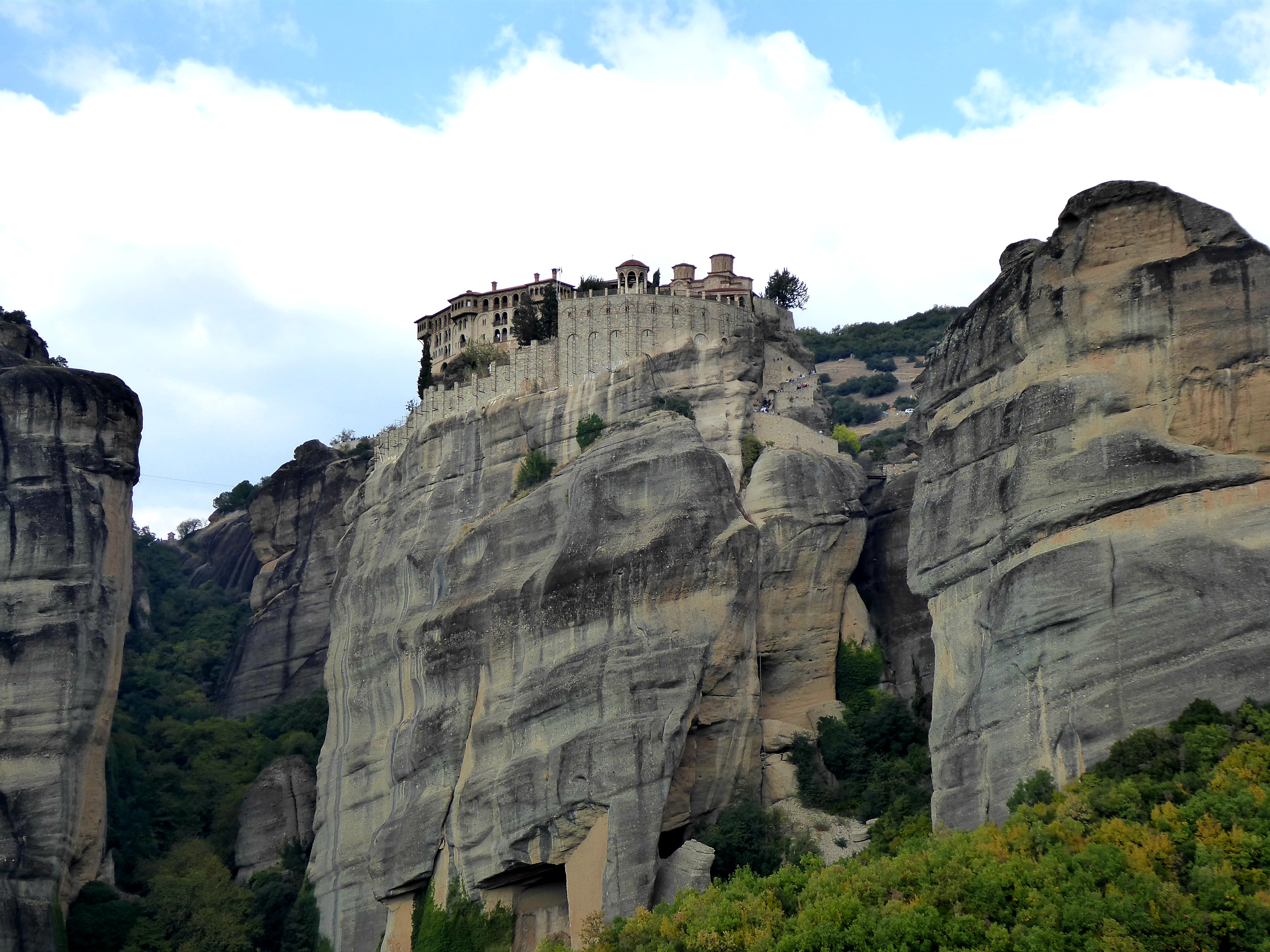
Some time later I emerged from the forest to the steps of a monastery. I arrived. But it was not at my intended destination. I’d arrived at the Great Meteora monastery instead, some distance away.
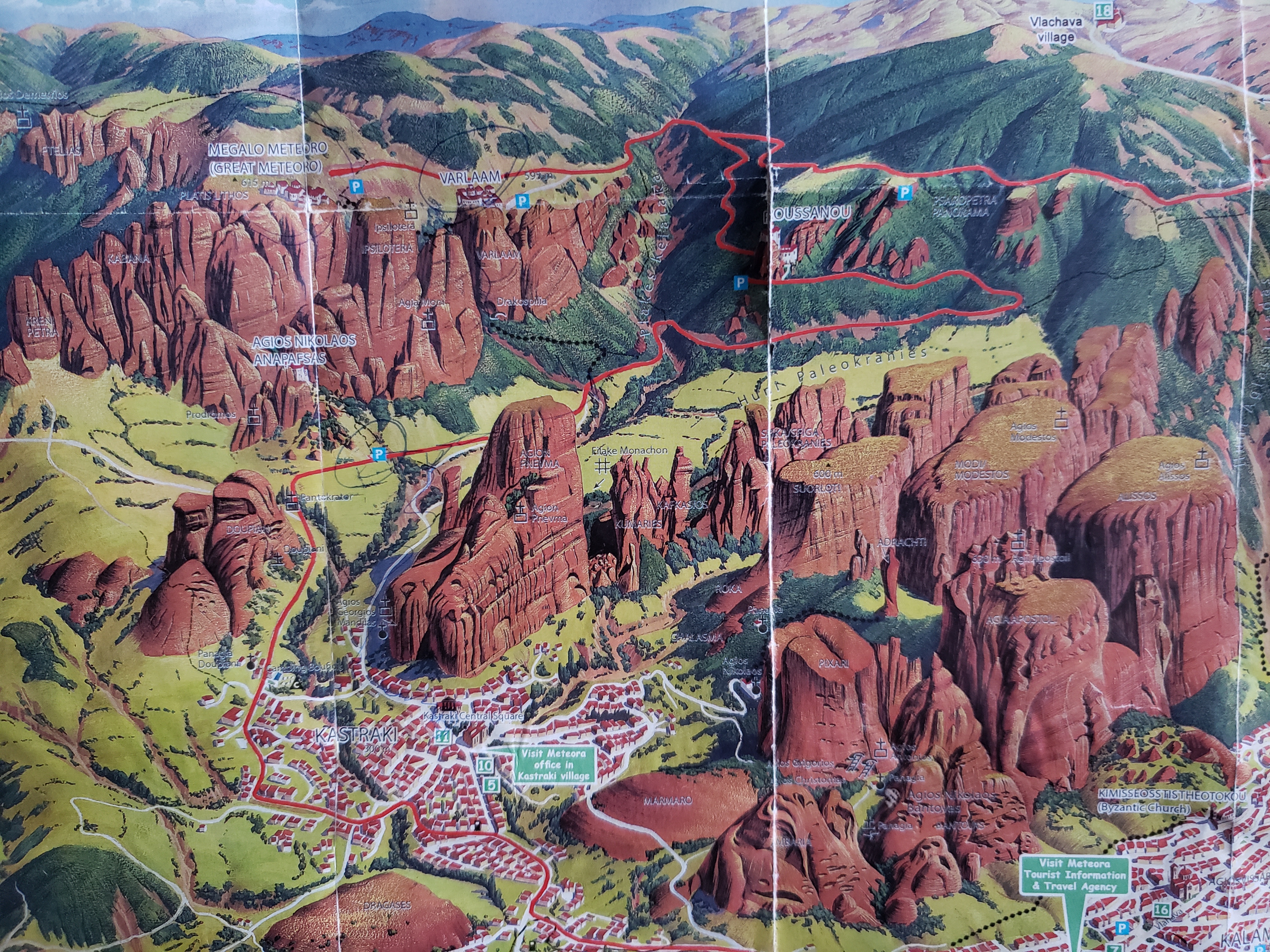
Apparently I’d lost track of time, but even more so, I hadn’t thought such a straight forward walk to the most popular, and biggest, monastery existed. No one had mentioned it.
Expecting crowds, I happily walked right in and paid the three euro entrance fee to a particularly good-natured gentleman. He welcomed me in numerous languages. Signs requested visitors to respect the dress code. I wrapped one of the many colorful skirts hanging from hooks over my pants and covered my shoulders with a scarf. I then wandered around the dark wide passages and saw a monk’s cell, no longer used. It was simple and small, but possessed a spectacular view. The old kitchen with ample pots, pans, and soot was on display too. The beautiful 16th c. frescoes in the main cathedral were particularly memorable.
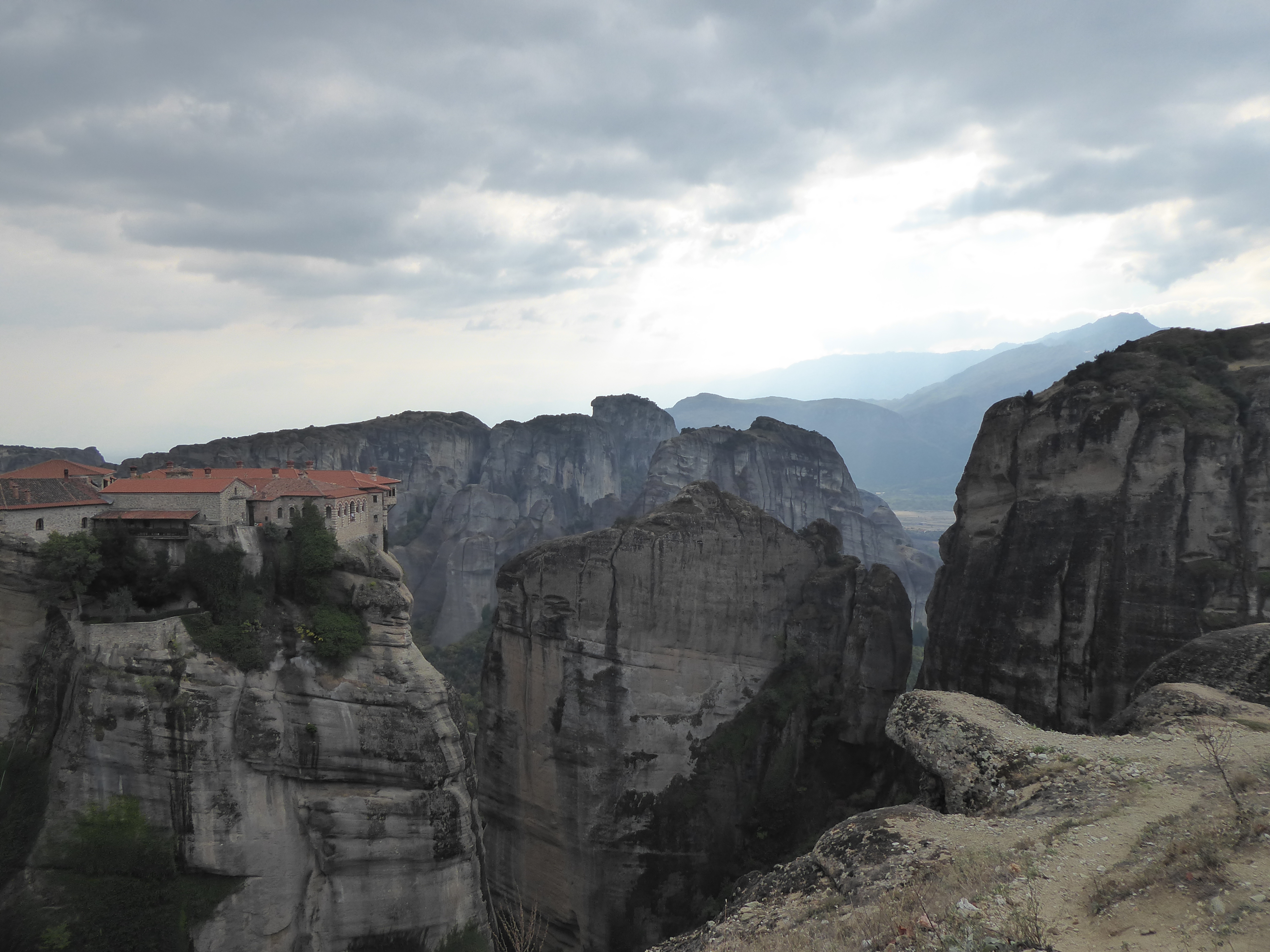
With my new-found confidence–I hadn’t really gotten lost after all–I spent the remaining days exploring. With some perseverance I managed to see all that I had hoped to, including the much-closer-than-I-had-imagined St. Nicholas monastery. My success was largely made possible by the extraordinary kindness of the locals. One man even offered to take me on his scooter to the beginning of a trail that continued to elude me. I accepted his offer.
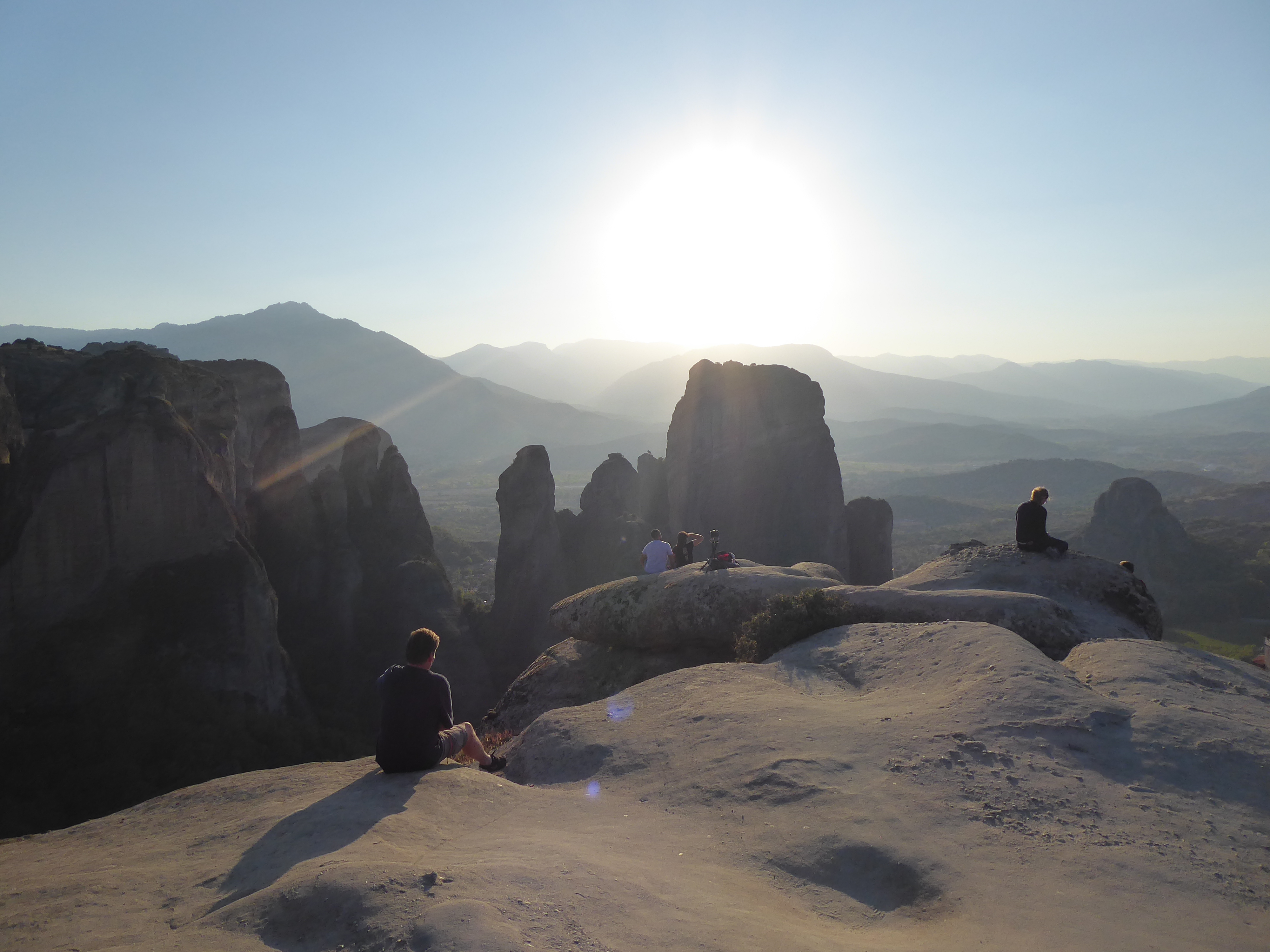
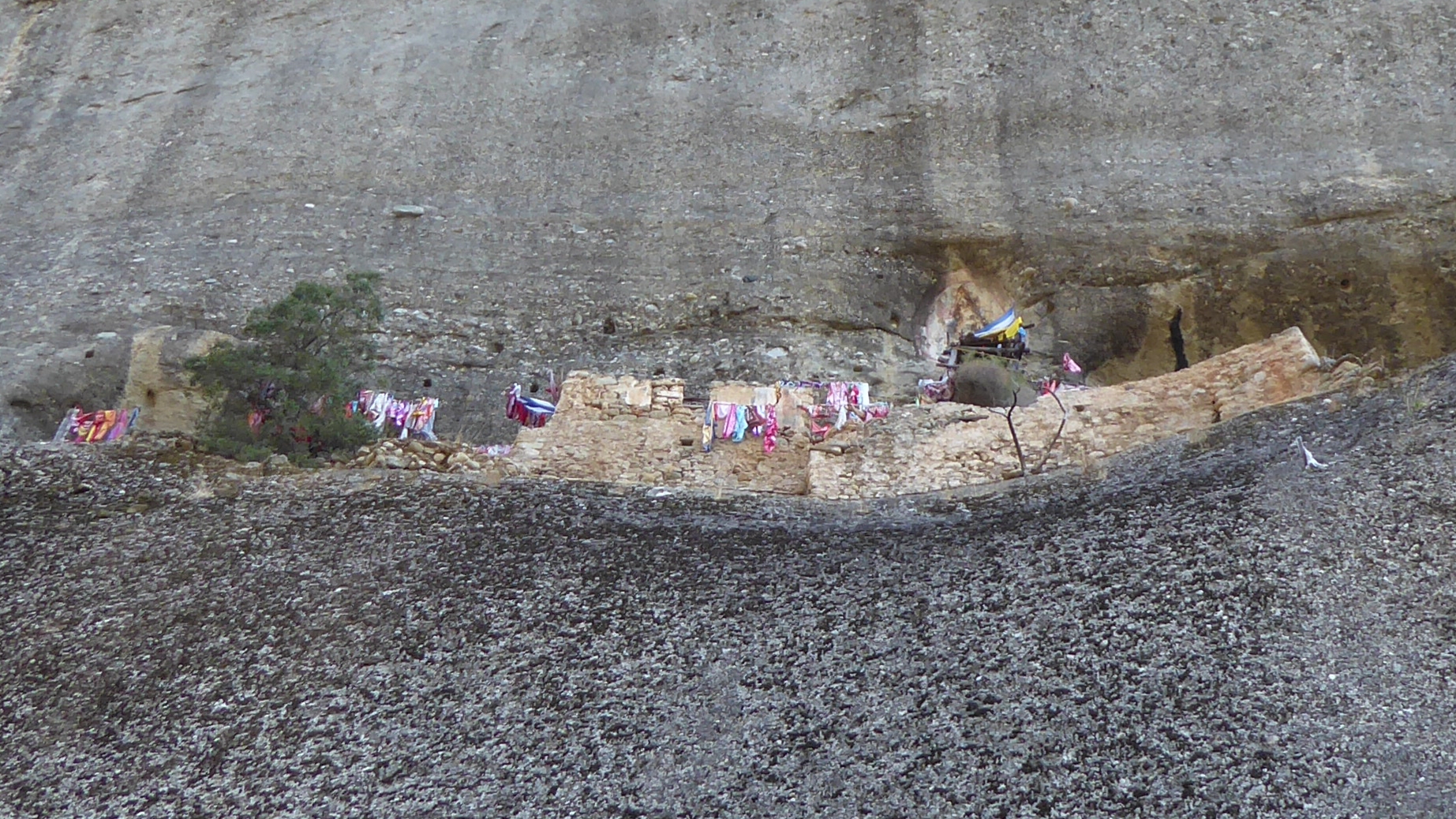
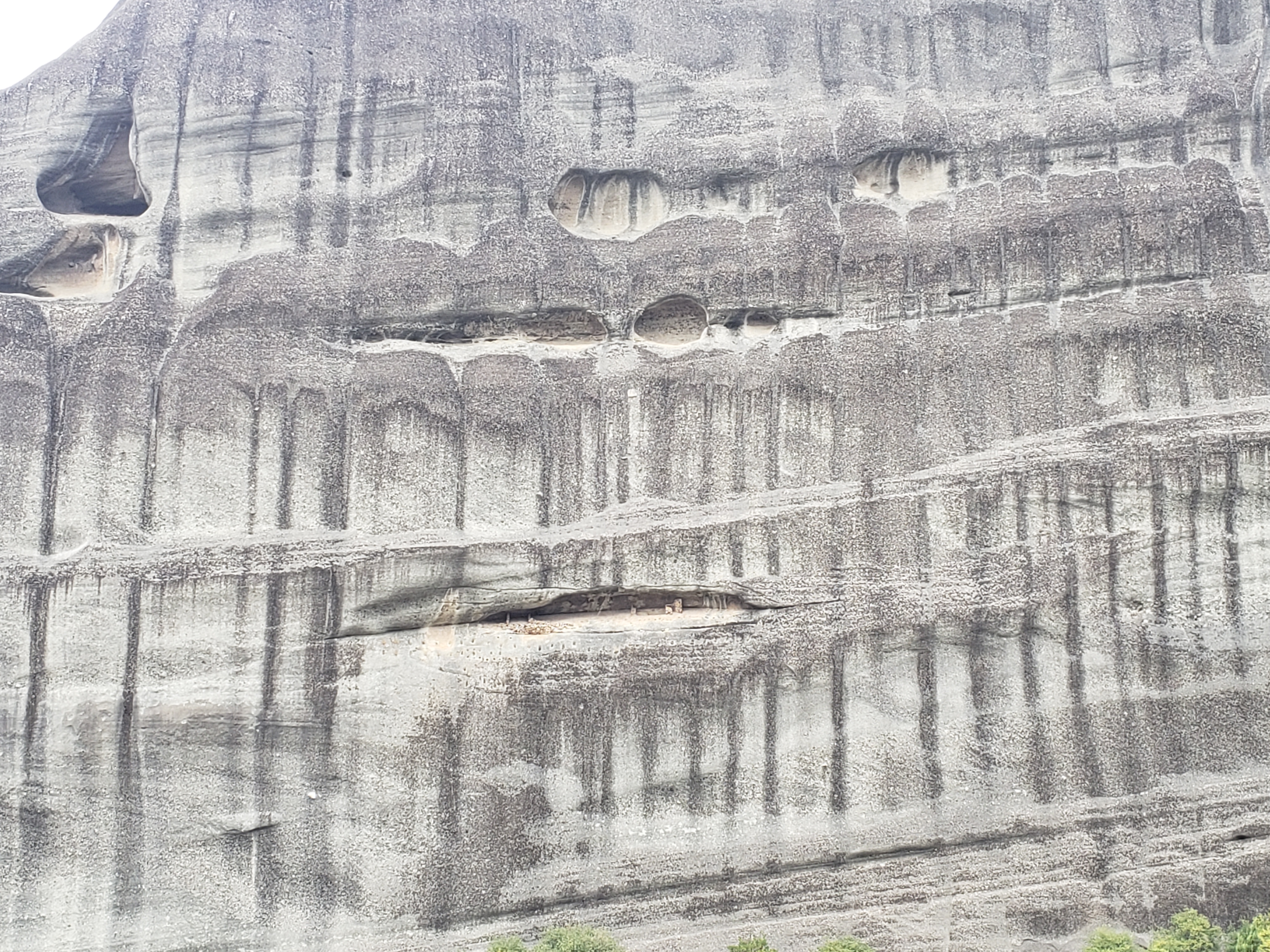

I returned to that old stone path often. I never encountered more than a handful of people. Apparently the lack of encouragement to hike on one’s own was effective.
I did however chance upon a young monk walking there who quickly averted his eyes when he saw me. Perhaps the locals are doing their share to keep the old stone paths free of tourists.
